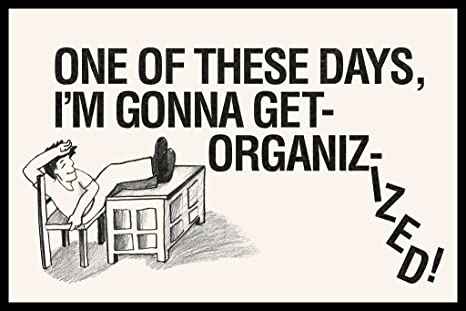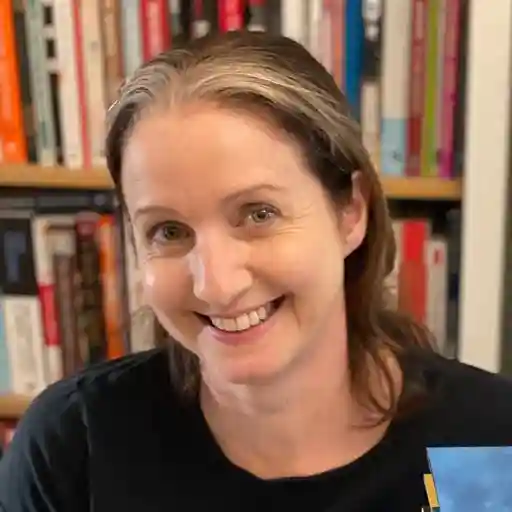Planning Complex Stories: What You Can Learn From an ADHD Writer
15:00 EST - Apr 28, 2021
My name is Jackson Dickert and I'm an author. My debut novel is actually coming out in June, so I don't know, maybe I can't say I'm an author yet — but it's coming. I'm the Chief Marketing Officer at Campfire Technology and we sell software for creative writers.
ADHD and me
I also have ADHD [Attention deficit hyperactivity disorder]. For those who don't know, ADHD is a chronic mental condition that encompasses attention, difficulty, hyperactivity, and impulsiveness. So a lot of people have also heard of ADD and that's kind of ADHD too. They were morphed into one big spectrum called ADHD a few years ago. If you have ADHD, we may actually not have the same symptoms just because there's a pretty wide range of them.
There are a lot of potential symptoms since attention difficulty, hyperactivity, and impulsiveness covers a lot of ground. I'm constantly learning new things about ADHD but the big thing is that ADHD makes it harder to do things that normal people can do. Repetitive mundane tasks can be really difficult for people with ADHD. Nobody likes doing chores like unloading the dishes or doing the laundry but for people with ADHD, it kind of goes a little bit further than that. It's truly difficult for us to accomplish simple tasks like this. So you can imagine how difficult a task sitting down and focusing on writing for an hour at a time can be difficult too.
This is a problem that a lot of writers have, so hopefully, some of my coping strategies will help both the ADHD brains and the non-ADHD brains here learn some new strategies to apply to their writing.
First things first
Also, right at the top, I just wanted to say that all writing advice is complete garbage. There's nothing that works for everybody. There's no such thing as universal good writing advice, in my opinion. So something that works well for me might not work well for you and vice versa. So if I bring up something that you can apply to your writing that doesn't work for you, I invite you to ignore me until I get to my next point. So without further ado, let's get started talking about planning complex stories and what you can learn from an ADHD writer. So we're going to be going over how to organize your plot into a story, sustaining suspense, some ADHD coping mechanisms for writers, and then 10 practical writing tips to help you get words on the page.
How to organize your story into a plot
This is easy. You just:
- Think of a plot that takes up 85,000 words
- Decide on relevant themes
- Figure out how characters will change (or not change)
- Weave in some subplots, ulterior motives, lies, love, and mysteries
- Set up promises to the reader throughout the story and
- Pay off those promises in a satisfying way
Done. Easy, right?
So let's start by figuring out our plot type. That seems something a new writer might do. A new writer might sit down and Google “types of plots,” pick one, and work from there. When you Google “plot types,” one of the first few results is “1,462 basic plot types” from dailywritingtips.com.
So here are all the ones they listed on that page that I visited.

If you're a new writer and this is the first thing you come across, you're going to be totally lost. And these are just the basic types.
Sure, “Murderous Adultery” is pretty straightforward — and that's a book that I'd absolutely read — but I have no idea what “Enmity of Kinsmen” means (and if you do, please keep your enmity to yourself). But here in front of us, we can choose between 69 supposedly basic plot types to create a story.
So how is this helpful?
It's not. It's not helpful. It's information overload. You're going to get overwhelmed. You're not going to know what to do with this information. It's gatekeeping for writers. Figuring out your plot type isn't a prerequisite to your writing. It's not required and oftentimes it won't help you at that moment where you're trying to sit down and figure out what story you're going to tell.
This is an overwhelming rabbit hole.
Now don't get me wrong: knowledge about plot types is helpful for experienced writers. The more you know about stories and their structure, the more you can subconsciously apply it as you outline. But most writers don't start with figuring out their plot type. They generally just start by writing.
So what do you write?
You want to start with your idea. Your idea is the plot. The story is what happens when characters experience the plot. And that's the part that you want to focus on. You don't need to know your plot type or your themes or common tropes. That's all second draft stuff: to polish your story within its genre.
First, find your conflict and your characters. Conflict needs to be interesting, unique, and challenging relative to your character. So for a space pirate, fighting off eldritch space gods might be a normal day. For a suburban mom, getting the kids to soccer by six is a normal day. If you flip those characters and their conflicts, things get a lot more interesting.
Once your space pirate is put into the role of a suburban mom, the problem becomes a lot more challenging for them. Though very capable, most suburban moms don't know how to fight off eldritch space aliens. In the same vein, most space pirates don't know the first thing about the most formidable creatures in the galaxy — which is children hyped up on Mountain Dew. All the parents know that.
Your conflict and how interesting it is relies on your character. I don't know about you, but I'd love to read the story about the underdog soccer mom fighting off eldritch space aliens. It's interesting, unique, and the problem is challenging and relevant to her.
This is why characters like Superman are generally tricky characters to write about. He's invincible, overpowered for 99% of conflicts. So if you want to write on Easy Mode, just make sure that your characters have weaknesses. It'll make the story more interesting, more unique, and your character's trials more challenging — which is going to be more stimulating for the reader.
Is your conflict good enough to last hundreds of pages?
Yes, absolutely. Always. As long as your characters are dynamic enough to support it, your conflict is never too small. Not to mention that along the way there are usually going to be new conflicts that arise. They don't have to be saving the world the entire way through the story. Sometimes saving the world starts with saving your neighborhood in chapter one, or saving your friends from a burning building in chapter five.
Meet Stephen King

He's a relatively unknown, self-published indie writer, but I think he's got some great ideas. Here's a quote from him.
"Put interesting characters in difficult situations and write to find out what happens."
Now, every writer in the world likes to quote Stephen King. We all take his advice as scripture because let's face it, it's often pretty good advice. So let's dissect some Stephen King novel ideas really quick just to prove my point — because it never hurts to take pointers from the King.
A dog attacks.
That book is 300 pages long. In Cujo, a dog with rabies terrorizes a town. The conflict is interesting because many people have dogs. The conflict is unique because dogs don't usually attack people. And the conflict is challenging because a regular woman and her child are stuck in a bad situation against the dog.
After an accident, a writer is taken in by a crazy woman.
That book is over 400 pages long it's called Misery. And in Misery, the conflict is interesting and unique just from the premise alone. Though in order to make it challenging — relative to the protagonist — the protagonist had to be bedridden and the antagonist was almost supernaturally strong.
A bullied girl gets superpowers.
That book is 200 pages long. King loves putting ordinary people in unusual positions. Making the main character an underdog makes the story inherently interesting. The unusual position they're put in is usually unique and, as an underdog, the character is at a challenging disadvantage.
Consider for a moment all the different directions you could go with this plot, depending on the character. In Carrie, she seeks vengeance against her bullies. How would the story change with a few tweaks? She could move to a new city and grapple with her identity. What do the powers mean for her identity? It's the same plot, same conflict, but because of the character’s decision, we have a John Green novel instead of a Stephen King novel.
Let's take a look at one more story by Stephen King.
A sewer clown terrorizes children.
That book is over 1,100 pages long. He wrote over a thousand pages about a sewer clown terrorizing children. This book is proof that as long as the conflict is interesting, unique, challenging, and relevant to your characters, then any plot can work.
How do you organize your plot into a story?

You think of a problem that's interesting, unique, and challenging...
You create a character who is most poorly equipped to deal with the problem…
And then you write.
But there's a lot more stuff between the beginning and the end. One big thing to think about, though, is what works for you. As a writer, you get a lot of advice and something that works beautifully for me might work terribly for you.
If plotting three-act structures is your thing, then great, do that. Personally, I'm big on pantsing. But at the end of the day, organizing your plot or your conflict and story idea into a story isn't too hard. Characters go from point A to point B. They grow and learn, or they don't and regress. Stuff changes, or it stays the same. Short stories do this with very few pages and they do it really well. But when you're writing a novel, you have to turn the plot into a story with a much bigger word count.
So how do you do that? How do you create all this stuff between the beginning and the end? With good pacing and by sustaining suspense.
Sustaining suspense
So what is suspense? If we're talking about the unknown that happened in the past, that's mystery. The unknown happening in the present is intrigue. And the unknown in the future?
That’s suspense.
You can have a story with no intrigue. You can have a story with very few questions about the past, but we usually don't read to discover something about the past. We read to answer questions about the future or to dispel the suspense. Even in stories where we are trying to discover something about the past, we're doing it to just dispel the suspense in the future.
So if a story follows a murder investigation, we have:
- A lot of questions about what happens in the past (mystery);
- Intrigue about the present, where the protagonist is trying to catch the killer and might be in danger; and
- Suspense for the wellbeing of the investigator, maybe the victim's family, and the safety of the general public relies on solving the murder mystery.
Suspense is all about the unknown, but you need to have some hints sprinkled in. The reader needs to have an idea about what could happen. Their imagination is your best friend here so be sure to drop hints about what could happen or what will happen to ramp up the suspense.
If the reader has no idea what happens next, that's not suspense. And if there's only one thing that can happen, it's not much of a question or a mystery, and consequently, there's not much suspense.
So how can you ramp up suspense?
Promises
One of my favorite ways to ramp up suspense is just by promising the reader what's coming. In the first sentence of Private by James Patterson, he promises at least two deaths to the main character. The quote goes like this:
To the best of my understandably shaky recollection, the first time I died, it went something like this.
It's a fantastic first line that sets up suspense and makes promises on what the reader can expect. Not only is your protagonist going to die once, but they’re also going to die at least one more time.
Want vs Need
Want and need can also help a lot because it makes the reader anxious about the future and that suspense. Will the character get what they want (or what they need) at the end of the book? Establish the character’s wants and needs early on to make us wonder. Then let our imaginations do the work for you. You don't need to pose the question in the book, just showing us the character's hopes and dreams is enough to create stakes.
Choices
Choice is also great for suspense. If you have a choice between two equally balanced options, it's going to create suspense, especially if both options seem likely to the reader. The more likely both options seem, the better. A great example of this is which guy will she pick in romance novels.
Dramatic Irony
I also recommend using dramatic irony whenever it's appropriate for your story. This is when the reader has knowledge of something that the characters don't. So for instance:
You have a character named Levi who finds his long-lost father. He gets a job at the same bar, then the book switches POV to the father. This makes all of their interactions much more suspenseful because we know that Levi is his long-lost son, but our main character doesn't.
Structure
An example of how you can play with structure is with the story starting later, and then backtracking. If you've ever seen Breaking Bad, the opening is a great example of this. Or if you’ve seen The Haunting of Hill House on Netflix, that’s a fantastic example of how you can use structure to create a sense of mystery, suspense, and uncertainty by using flashbacks.
Side note: flashbacks are really called analepsis, and a flash-forward (or a glimpse into the future) is called prolepsis. The more you know, right? I might've just helped you out on trivia night when the world opens back up.
Now let's talk a little bit about stakes.
Stakes
Now stakes make us invested in characters. They inherently create suspense as well. They make us wonder things like, "Does the character get what they want or not?"
When you have a character that we care about, make that character try to do something.
Now, I can't be the only one who's ever stared at ants while they worked before, right? Imagine an ant trying to haul a giant crumb back to his home. And because we're weirdo writers, let's imagine that this ant told his friends he was going to come back with the biggest crumb ever.
So the protagonist ant is trying to do a hard thing, and right off the bat readers like seeing characters who are trying to do a hard thing. You can't help but be totally sucked into its plight.
You'll spend a good 10 minutes totally enthralled and staring at this ant, as it treks across your kitchen floor. You want to know, does the ant make it across the room with the giant crumb or not? This is a great example of a combination of stakes and suspense. From the beginning of the story, we know what's at stake: the ant's life, the wellbeing of the rest of the colony. And the ant's reputation is on the line here!
Now, because we're writing fiction, let's imagine that you own a chameleon that loves eating ants, and you remember it's roaming free in your house. You panic and look everywhere for it, but since it's a chameleon, you can't find it.
Realizing the best way you can help the ant is by staying by its side, you dash back to the kitchen. We instantly fear the worst for the ant. Not only does it have to carry this massive crumb across the room, but it has to do so against a giant, camouflaged, super predator.
Back in the kitchen, you see a note from your husband. It says, "Ran to the store. We're out of chameleon food." And then at that moment, you spot the chameleon. It's making its way to the ant. Boom, the chapter ends.
The takeaway
So what's at stake? The ant's life, the wellbeing of the colony, and the ant's honor. We stated that at the beginning of the story. We care about the ant because he's the underdog. He's carrying a giant crumb to take care of his family, so the reader cares about the ant.
We remember that we have a free-roaming chameleon in the house, which makes us worry for the ant's safety and makes the reader fear the worst. And then we find a note from our husband. It says, "We're out of chameleon food." This is a great detail because it might mean the chameleon has been fed, or it might mean that it's completely ravenous. It hasn't eaten in a while. We don't get to know.
Give the reader a little bit of info about something and leave all the rest of their imagination. Suggest something and let them figure it out. Sure, maybe the chameleon was fed, but does that mean he can't go for a nice little snack? You'll have to read and find out. The suspense about what could happen is the readers reason to read the next chapter.
Tips for suspense
- Continue creating tension for the future throughout your payoff.
So as you pay things off, you're going to create more problems and build up to more reveals. 2. Damned if you do, damned if you don't decisions. These are also really great for suspense because no matter what your character chooses, it's going to be bad.
- Time limits. Also stressful for the reader because they're constantly aware of them. And that's a good thing. You want the reader to be stressed and anxious about the time limit because that means they're invested.
- Withholding information. When it comes to withholding info, you don't want to withhold superficial information like names or genders. You want to be very purposeful in what you withhold to make the reader perk up and pay attention. They'll notice. Readers are smart and they pick up on stuff. They're going to wonder why you withheld that information.
- Uncertainty. There must be some things that readers know with absolute certainty to make them be able to appreciate the uncertain. So you want to aim for a frustration balance in the reader. They should be interested to find out what the withheld information is, but not so much that they get frustrated.
- Surprises. Twists are all about characters. It's not so much about tricking the reader or the surprise itself as it is about how the characters feel about it. If there's a huge twist, but the character is unsurprised, it's going to diminish the impact. The reader's emotions are going to mimic the protagonist. If the protagonist is sad, your reader might be too. If your character is angry about the twist, it'll heighten the way your reader feels about it.
The most important thing to remember when it comes to suspense is that it's a juggling act. We're constantly throwing balls up into the air and making promises to the reader, but at some point, we have to catch them when they come down. Otherwise, we have an unsatisfying story.
ADHD Coping Mechanisms for Writers
 These are some of the ADHD coping mechanisms that I personally recommend. They help me fight through my mental fog and executive dysfunction, so if they can help somebody with ADHD I figured they might be able to help some “normal” brains out there.
These are some of the ADHD coping mechanisms that I personally recommend. They help me fight through my mental fog and executive dysfunction, so if they can help somebody with ADHD I figured they might be able to help some “normal” brains out there.
Distractions
So people with ADHD are infamous for getting distracted and let's be honest, so are most writers. ADHD brains are drawn to the most stimulating thing in the room. That could be the TV, your phone, the new tab button on your browser that leads you to YouTube. And sometimes it's people.
The best cure for distractions is boundaries. Boundaries with yourself and with other people. Before I even sit down to write, I give my family a heads up I'm going to be writing and set boundaries with them. This way I can go ahead and help them with anything they need before I get in the zone. Goodness knows, if I get distracted while I'm in the zone, it's going to be much harder for me to get started again.
Once I get started, I have to stay in the zone. If I get distracted, it breaks the spell. It's all over.
Next, I pick my writing spot. It might be cliche, but my favorite place to write is in coffee shops. I like the ambient noise, the people around, and seeing other people working helps me stay focused on my work. I also like to turn on music that I've heard a million times and know all the lyrics to. That way I'm less likely to get distracted by noise or eavesdropping on somebody else's conversation.
Hyperfocus
People with ADHD also have the ability to hyperfocus on things really well. My first novel, which, shameless plug, comes out June 1st, is called Quest for the Golden Plunger. It’s about 80,000 words long. There was a day I sat down and wrote 7,000 words in one day.
It was crazy. I sat down, got in the zone, and started writing. I didn't stop to eat or go to the bathroom, which is unhealthy. I didn't mean to. That's just how focused I was. I wrote over a 10th of my novel in one day. Pretty wild.
I like to compare this hyperfocus to the flow state: a fascinating sports psychology term for getting in the zone. I can't cover it all right now, but here are the basics:
The flow state is an almost trance-state that athletes and performers of all kinds get into. When writers sit down to write, it’s a type of performance. The flow state is when your brain turns off, you know what to do, and you get it done. It occurs when you have a high level of perceived skill in the task and the task you're about to take on is a high level of challenge.
If you're interested in reading more about it, I definitely recommend checking out the book Flow: The Psychology of Optimal Experience.
Delayed task initiation
This another major symptom of ADHD, and it's exactly what it sounds like. You want to do something and you just can't. It's also known as executive dysfunction. This should sound pretty familiar to most writers. You want to write, and then you don't. You do anything else. You get a snack, you check Twitter, whatever.
I love timers and the Pomodoro Technique here. The Pomodoro Technique is where you give yourself five minutes to delay, delay, delay to your heart's content. Scroll through Twitter, watch videos, do whatever for five minutes. But when that timer goes off and your five minutes are up, set that timer for 25 minutes and you get to work. Then after that 25 minutes, you get to take another five-minute break.
It really helps if I'm having trouble focusing and staying focused, my brain keeps wanting to be elsewhere. It just depends on what my brain is doing that day, I guess. Whether I like to do that or hyperfocus.
You can't get into the flow state every time you try to do it. It's not magical or mystical. You have to have a high level of perceived skill and a high level of difficulty at the challenge. So if that day writing's coming easily to you, you might have a harder time entering the flow state.
Deadlines
If you're a writer and you're struggling to get words on the page, create a deadline. It could be that if you hit your deadline, you reward yourself with that thing that's been sitting in your Amazon shopping cart. Maybe you join a writing group to hold yourself accountable. Or my personal favorite: announce to the world that you have a certain word count you're going to hit by a certain time period on social media. Make peer pressure work for you. You don't want to let your friends down or miss the deadline you told the world, so you'll work your butt off to hit it.
The best thing for a writer with or without ADHD is a deadline. You'll be amazed at how much work you get done.
Hack your brain
So it's no secret that people with ADHD have brains that work a little bit differently, but dopamine levels may be at the heart of it. Dopamine is a hormone in the brain that's responsible for feelings of reward and pleasure. Studies have found that people with ADHD don't have the same levels of dopamine as regular people. So whereas most people will get a nice little bump of dopamine whenever they complete a task like doing the laundry or one of those chores we talked about earlier, it can be harder for people with ADHD to get that dopamine bump.
We have to hack our brains to get that dopamine bump with things like small rewards for completing tasks or creating lists and checking things off, which is so satisfying. Some people think that it sounds kind of silly, but things like sticker charts work really well for people with ADHD. It's not just for children. It's not immature. It's very satisfying to be able to look at something and visually see, "I have accomplished this."
Organization
People with ADHD and most writers are terrible with organization. I used to leave notes about my writing everywhere on scraps of paper, the notes app on my phone, etc. And as a result, my writing always came out disorganized. Or I found myself wasting time looking for information that I didn't have filed away correctly.
So what's the solution here? Better organization.
For this, you'll have to find what works for you. Personally, I prefer writing software, and there's a lot of excellent free options out there. If you've got the patience for it, you can create your own story bible with something as simple as Google Docs, Microsoft Word, Excel, anything like that.
Whichever way you decide to organize, promise me that you have your work backed up so you don't lose it when the cat decides to knock your computer off the table, because it's going to happen.
Organization can be a pain but it absolutely pays off. There's nothing worse than getting to chapter 11 of your story and not being able to remember minute details about the way a character looks. Good organization will always help you write better stories faster. It just sucks to waste time on that kind of thing.
10 practical writing tips to get words on the page
1. Tell yourself a story. That's it. That's all you're doing. Don't overcomplicate things with those plot types we talked about earlier or off the walls outlining, unless that kind of thing helps you. But if you are an outliner, then make sure in your outline that you aren't telling yourself a crappy version of the story. That's going to lead to a lot of problems for you to fix in the next draft.
2. Inciting incidents are tricky. Inciting incidents should be the things that carry us all the way through the book. Think of them a crisis or a huge problem to solve.
Someone's death, as an inciting incident, is usually tough to make work. Death in many stories isn't a problem to solve. How do you solve someone's death? You can't. Since many people grieve the same way, it might be very challenging to pull off, though this doesn't always apply the same to horror, sci-fi, or fantasy. But again, there are no rules when it comes to writing.
3. The obstacle. Don't be afraid to be explicit about what the exact problem is. Don’t worry about being too heavy-handed in your manuscript as to what the obstacle actually is in your story. That'll get ironed out.
In the first draft, write exactly what the problem is as a thesis statement if you're having trouble. To help you with the middle and the end, you want to be able to reference exactly what is causing these problems and pulling us through your plot.
Just make sure you're thinking critically about your obstacle. You'd never want your reader to think, "Well, why didn't they just do XYZ?" If you have that thought, then the reader will too, so explain why your characters can't do it.
4. Make bad things happen to your character. This way, your reader can see what your character’s made of. Disney movies are scary sometimes, but they still end up happy in the end. Happy stories still need problems, and the characters should suffer somewhat until the end.
Think of your novel as the interesting part of someone's life. Their crisis is unsolvable for a long time and terrible things keep happening to them, which makes it interesting. You should constantly be thinking about what else could happen. What else can you throw at them?
5. Write your first draft ASAP. Do you remember that indie writer from earlier, Stephen King? He recommends that you write the first draft in three months and be done. Well, that must be nice for him, but I have a life. It's tough to write a novel in three months. Time is a luxury that many people don't have, but he's right. You should finish that rough draft as fast as possible. Don't worry if it sucks, you'll fix it in the second draft.
6. Add new characters. If you get stuck while you're writing, a great thing to do to get through writer's block is to add new characters — both people the main character knows and doesn't know. New characters are great because it shows more about the world, like if they're boring or eccentric or how they contrast with current characters.
New characters, often mirror something in main characters. Consider the power dynamics when a new character shows up. There's always a power dynamic between characters at play, so you need to consider all these different facets and how they can help you get through your writer's block. A lot of times, writer's block just means that your conflict isn't big enough because your character should always have a problem to solve.
7. Funny hats. When that new character shows up, give them a distinct physical feature to remember them by. Neil Gaiman refers to this idea as “giving your characters funny hats.” It doesn't just have to be physical, though. You can give them a word they repeat a lot or a phrase so you have a quick and easy mental picture of them. A character who says "bro" is instantly going to conjure a different image than a character who says "hey kid."
8. Changes. An easy way to make your character more interesting is by putting them through something where any normal person would decide to change, but then they refuse. Character arcs are satisfying when done right, without a doubt, but characters don't always have to change. Homer Simpson never changes. There isn't always a lesson.
Most of the time when characters change, it's because they've been through a lot. If a character has more or less power at the end of the novel compared to the way they started, they're usually changed.
9. The Rule of Cool. This is something from Brandon Sanderson. Basically, when in doubt, put cool stuff in your book — even if it doesn't make sense. The kind of stuff that people who read it will totally nerd out over. At the end of the day, this is your novel. Have fun with it and put in stuff that you think is cool, even if you have to work it out more in the second draft to make it make sense.
10. Read books. We all know that reading books will make you a better writer. But I mean literal, physical copies of books of the things that you need to know and learn about to write your novel. I know you can use the internet to research, but it's too easy to get distracted on the internet. It's not good for creative brains the way physical books are.
The internet will overstimulate you and writers have their best breakthroughs when they're under-stimulated, so I highly recommend you get a physical book. I guarantee you will get more writing done that way. And you'll spend less time on YouTube watching cat videos.
Jackson is the CMO at Campfire Technology. Their writing software, Campfire Write, is available through plans starting as low as 50 cents a month. Use the coupon code REEDSY21 to receive 20% off all lifetime purchases in 2021.
His debut novel, The Quest for the Golden Plunger, comes out on June 1st and is now available to pre-order on Amazon.





